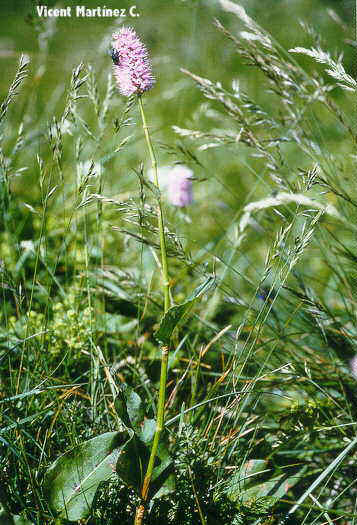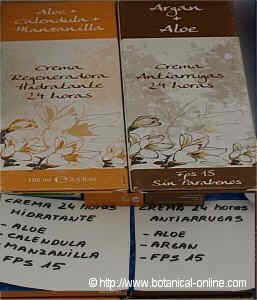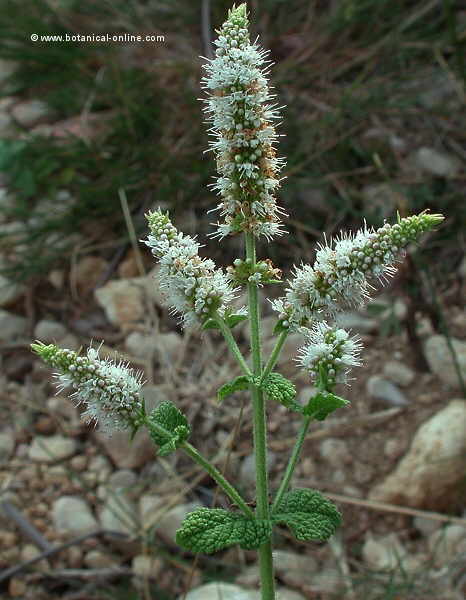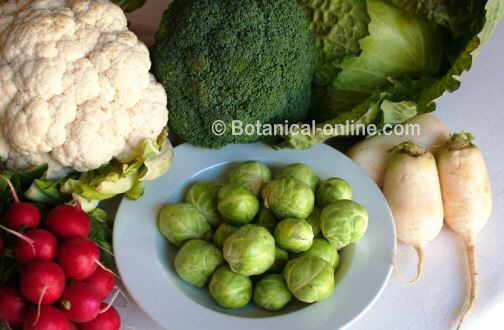Contents
Rosehip jam, benefits and how to cook it
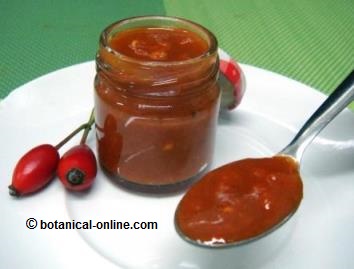
Rosehip is a very suitable food in winter, since the vitamin C it contains helps us to detoxify the body and helps treat damage from infections such as the flu or colds.
During the wars, in some countries like England, rosehip syrup was given to the population as a source of vitamin C, since there was not enough fruit import.
In addition, vitamin C has a very important effect on the immune system, being considered as the vitamin that increases the defenses.
It is very convenient for heart disease and related poor circulation, such as hypertension, cholesterol or poor circulation, since vitamin C and the flavonoids of the fruit help strengthen the blood vessels and fight these ailments.
This marmalade is rich in pectin, a type of fiber that has an intestinal regulatory effect and properties against constipation.
It is also suitable to help bone health and for skin care from the inside.
Rosehip marmalade recipe
This recipe is original and courtesy of Montserrat Enrich, a great connoisseur and disseminator of the kitchen with wild plants and author of the blog Gastronomia salvatge:
Ingredients for rose hips marmalade
- 1.5 kg of ripe rose hips
- 750 g of sugar (half the weight of rose hips)
Rose hips preparation
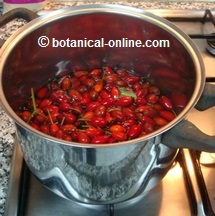
- Rose hips must be collected at their optimum ripeness (when they have a bright red color and a fleshy appearance)
- Remove the remains of leaves or twigs
- Wash ripe rose hips with plenty of water
Preparation of rosehip jam
- Boil the rose hips in 3 liters of water with the sugar, cook them for about 40 minutes over medium heat (not at maximum power)
- Strain the fruits and reserve the cooking water for later
- With the help of a potato masher, the fruits must be milled and added in parts. By mashing them, you can extract the pulp and remove the seeds from the fruits.
- Because they contain many seeds, the fruits can be difficult to grind. Therefore it is better to press them in parts. If they give off little pulp, it indicates that they need to be cooked a little more.
- With this process we obtain a thick rosehip jam, very rich in nutrients (especially vitamin C) and fiber. It can be used to flavor yogurts, in cookies, with toast, etc.
Illustrated process of how rosehip jam will be made
This process is shown in the following photos, step by step:
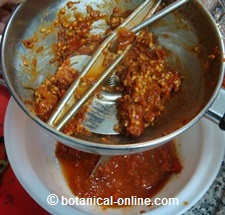 | 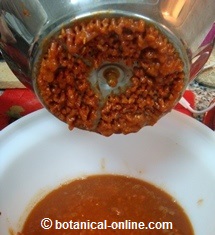 | 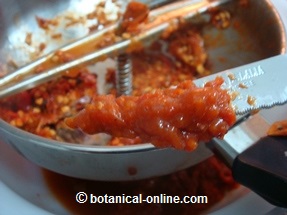 |
| Photo of how rose hips are crushed and ground with the potato masher | Photo of the pulp left by the rose hip after being boiled and pressed. | Detailed photo of the rose hip pulp, where the thick and jelly-like texture is appreciated. |
What is the second rosehip jam?
The “pasta” resulting from the grinding of the fruits, although it contains many seeds, can be used to make more jam. We will call it the “second” rosehip jam, which will be somewhat more liquid than the previous one.
marmalade pulp rose hip paste
In the photo you can see that the seed paste resulting from the previous process still contains a lot of pulp, which we can use to make more jam.
Recipe of the second rosehip jam
- We boil the rosehip paste, which contains many seeds, this time with the cooking water that we have reserved previously (until covered)
- We stir it so that the remaining pulp of the seeds is detached. It has to be cooked for 10 minutes only.
- Again, we pass this liquid again, in parts, through the potato masher, until the liquid jam is sieved and the bones or seeds remain in the potato masher, practically without pulp.
- The resulting jam will be more liquid than the previous one but more abundant. It can be used the same as the previous one, or in recipes, to mix with other ingredients, for example, in pastry or cake doughs. Both jams have a very rich sweet and sour taste .
Step by step of the recipe «second marmalade of rose hip»
Below is this second process, step by step, in the following photos:
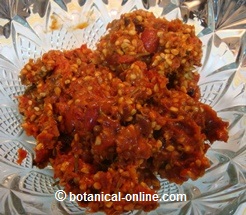 | 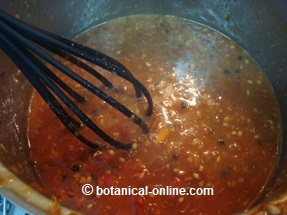 | 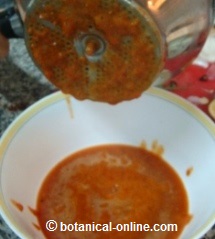 |
| Photo of the “paste” of rose hips resulting from the previous milling. It still contains pulp that can be used to make more jam. | Photo of the rosehip paste in the fire (second cooking). Stir it so that the seeds of the pulp ca be detached. | Photograph of the rose hip pulp after the second boiling, where it can be seen that it has a more liquid texture than the previous one. It can be compared with that of the previous process to observe the difference in texture. |
![]() More information on rose hips and dog rose
More information on rose hips and dog rose

